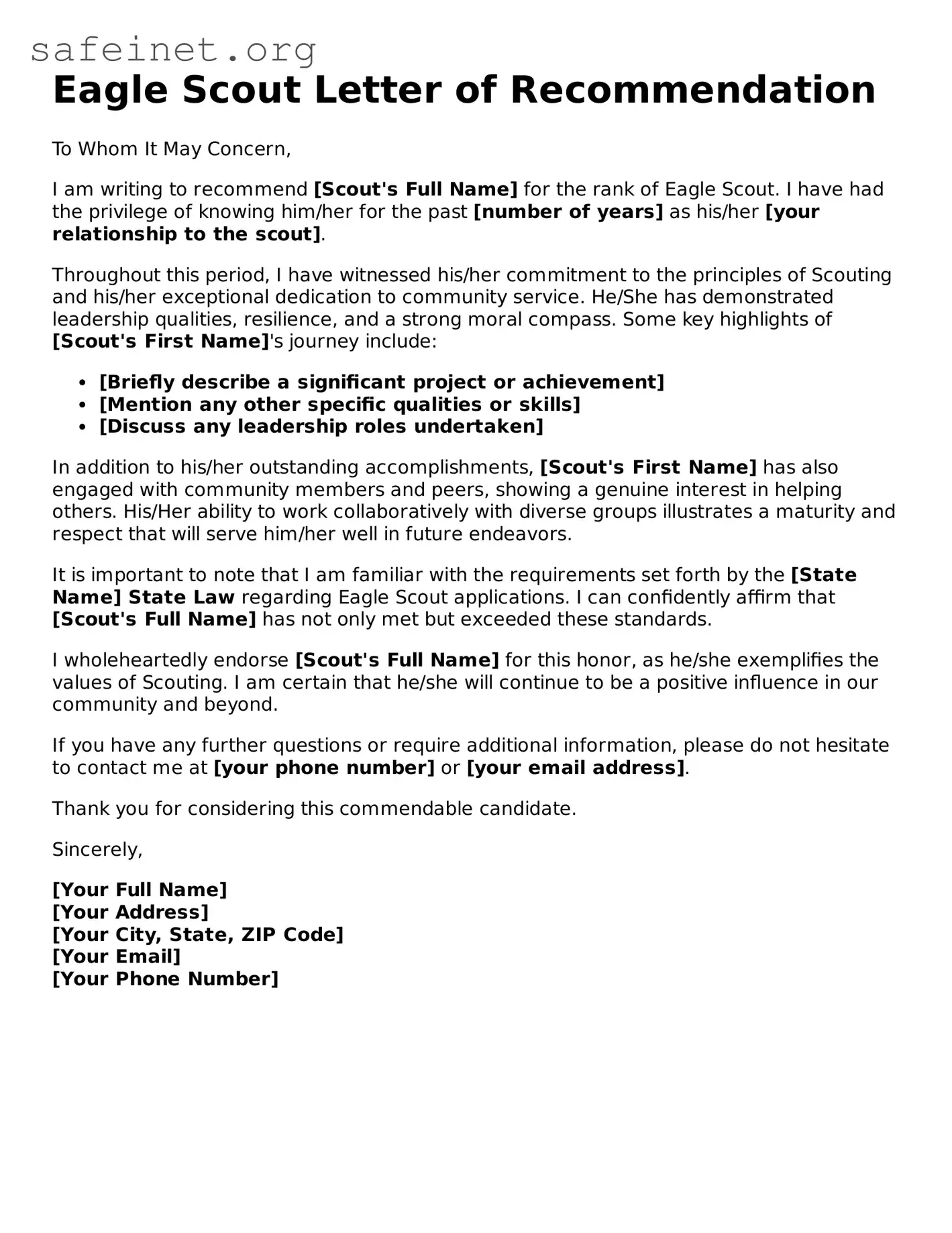Eagle Scout Letter of Recommendation
To Whom It May Concern,
I am writing to recommend [Scout's Full Name] for the rank of Eagle Scout. I have had the privilege of knowing him/her for the past [number of years] as his/her [your relationship to the scout].
Throughout this period, I have witnessed his/her commitment to the principles of Scouting and his/her exceptional dedication to community service. He/She has demonstrated leadership qualities, resilience, and a strong moral compass. Some key highlights of [Scout's First Name]'s journey include:
- [Briefly describe a significant project or achievement]
- [Mention any other specific qualities or skills]
- [Discuss any leadership roles undertaken]
In addition to his/her outstanding accomplishments, [Scout's First Name] has also engaged with community members and peers, showing a genuine interest in helping others. His/Her ability to work collaboratively with diverse groups illustrates a maturity and respect that will serve him/her well in future endeavors.
It is important to note that I am familiar with the requirements set forth by the [State Name] State Law regarding Eagle Scout applications. I can confidently affirm that [Scout's Full Name] has not only met but exceeded these standards.
I wholeheartedly endorse [Scout's Full Name] for this honor, as he/she exemplifies the values of Scouting. I am certain that he/she will continue to be a positive influence in our community and beyond.
If you have any further questions or require additional information, please do not hesitate to contact me at [your phone number] or [your email address].
Thank you for considering this commendable candidate.
Sincerely,
[Your Full Name]
[Your Address]
[Your City, State, ZIP Code]
[Your Email]
[Your Phone Number]
